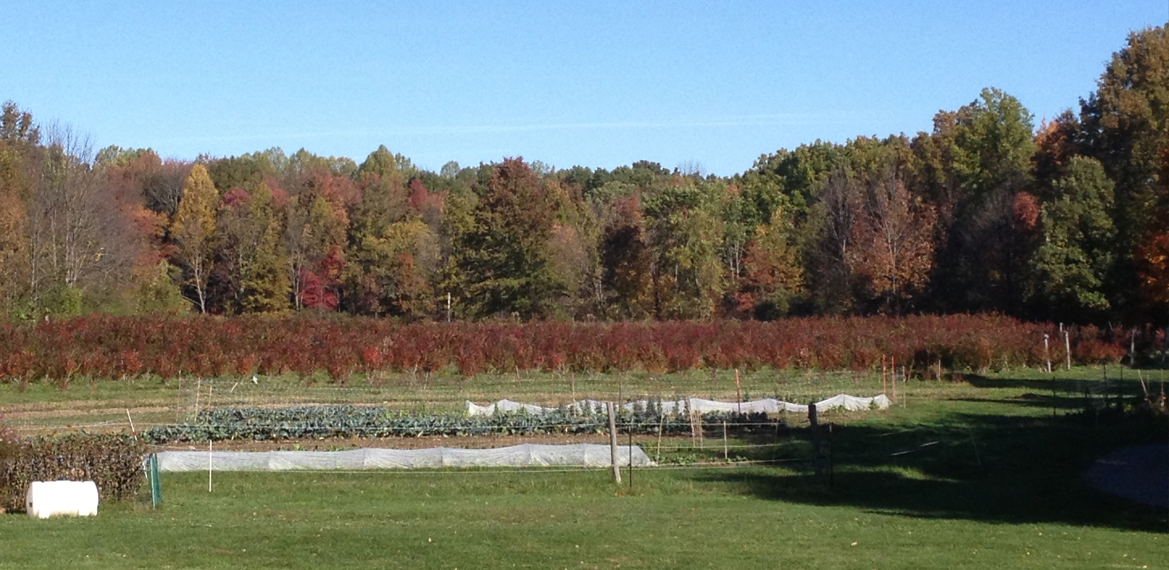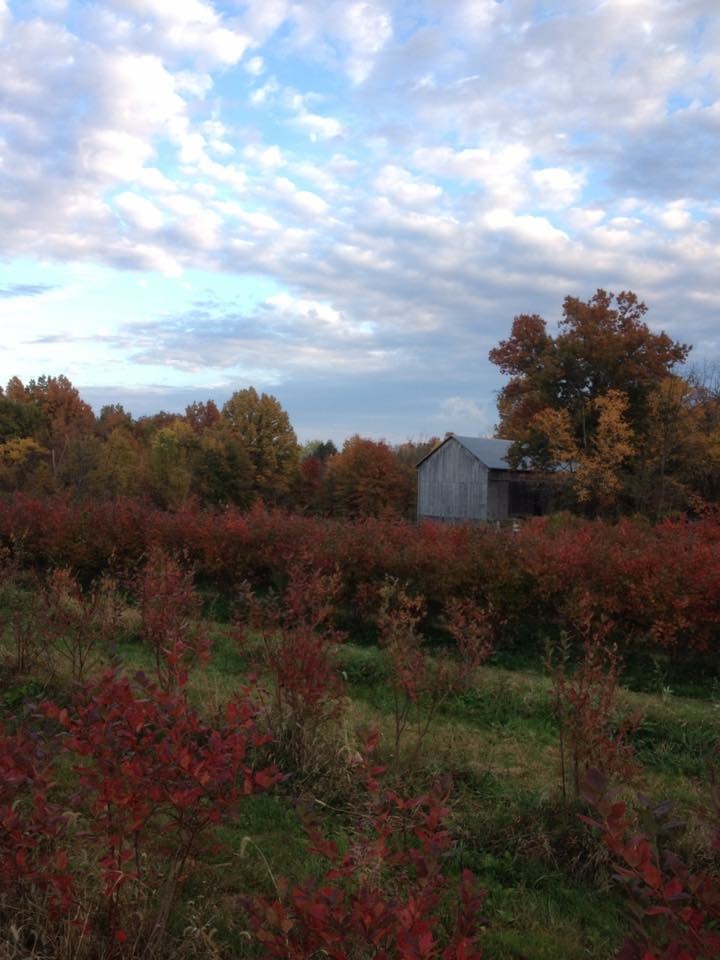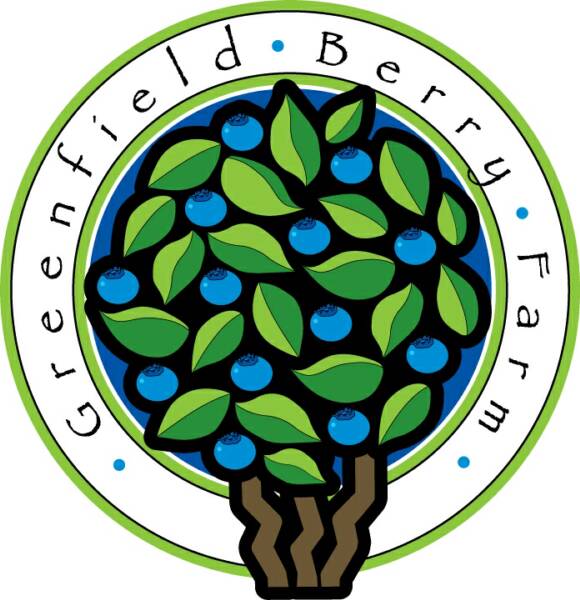
“I think everybody comes to farming for different reasons. I am motivated by a kind of personal satisfaction – communing with nature.”
– Daniel Greenfield
Background
The Countryside Initiative is a program of the Cuyahoga Valley Countryside Conservancy (“Countryside Conservancy”), a nonprofit dedicated to preserving the rural character of the Cuyahoga Valley in northeast Ohio. The Cuyahoga Valley National Park partnered with Countryside Conservancy to create this innovative program, which acts as a matchmaker between farmers and farmland in Cuyahoga Valley National Park. The farmland in the park is leased by the National Park Service to farmers who are committed to sustainable agriculture and responsible stewardship of the land. There are currently eleven farms in the park, including Greenfield Berry Farm, a pick-your-own berry farm owned and operated by Daniel and Michele Greenfield.
Finding Their Roots
Daniel became a farmer because of his love of nature. “That’s where it all stems from,” he explains. He holds a PhD in environmental education and a bachelor’s degree in Philosophy. Prior to farming, he taught environmental ethics. However, in the early 2000s, he started wanting a life closer to the land and began to volunteer on farms and attend workshops on agriculture. It was around that time that Daniel learned about the Countryside Initiative and started seriously thinking of farming as a career choice.
“I think I read about it in the local newspaper,” Daniel explains. It was everything Daniel and Michele were looking for. In fact, “it just seemed perfect.” Cuyahoga Valley National Park was only 20 minutes from their home (they wanted to stay local) so it would give Daniel the opportunity to experiment with farming while his wife Michele could keep her off-farm job, and it was near their families. Most importantly, it was an affordable way to access farmland. Greenfield Berry Farm is near both Cleveland and Akron, where land is very expensive, and the Greenfields wouldn’t have been able to afford farmland without the Countryside Initiative program. Given the high cost of land around Cleveland and Akron, “it was pretty much Countryside Conservancy or bust,” says Daniel. “I was set on it because we really wanted to be in this area.”
So Daniel and Michele drafted a proposal for Greenfield Berry Farm, a pick-your-own model. They submitted the proposal to the Cuyahoga Valley National Park, were accepted, and signed a lease with the National Park Service for a 20-acre parcel that includes a historic farmhouse and a barn. Daniel and Michele actively farm between 10 and 12 acres and the rest is occupied with structures or cover crops.
The Lease
One of the most notable aspects of the lease is how long and exhaustive it is. Daniel describes it as “a typical government lease. It spells out everything.” For example, there are lease provisions that mandate methods of farming, define the rent of the historic farmhouse that the Greenfields live in, lay out a formula that determines the rent and how much it will increase with inflation, and impose restrictions associated with living in a 160-year-old historic home.
The lease spells out both the duration of the farm lease and how rent is calculated. The lease term is for 60 years, but Daniel and Michele can terminate their lease at any time. The rental payments are broken into two parts: a flat fee and a production component. The flat fee is approximately $600 a month, which Daniel considers reasonable. On top of the flat fee, they pay a percentage of their gross production value (beginning at approximately 5% during the first year of the lease and maxing out 10%) with some deductions for expenses.
A notable component of the lease is that it requires the farmers to submit an annual Proposed Operations and Development Plan for approval by the National Park Service. The lease states: “The Lessee [the farmer] will prepare an [annual farm report] for Lessor [government] approval – – – If the information provided in the [annual farm report] and subsections do not meet the Lessor’s expectations, the Lessor will meet with the Lessee to resolve those concerns.” The plan must include, but is not limited to:
- A narrative description of the Lessee’s proposed Agricultural activities;
- A description of the Lessee’s proposed alterations, including capital improvements and expected preservation maintenance activities;
- A marketing plan for all commercial activities;
- A general list of all commercial products and services to be sold by the Lessee; and
- A description of the Lessee’s plans for promoting public access and educational activities on the Premises.
“They are looking for certain things. There are natural resource concerns, archaeological concerns, etc.,” explains Daniel.
In general, Daniel cautions that the terms of the lease are fairly strict. “You are being married to the National Park and you should know this. You can’t just run out and build a shed or put up a fence. Anytime you do something that might disturb the ecology of the area or plant something that might be invasive, they want to know about it.”
Although the strict lease conditions have not inhibited Daniel’s farming business, he notes that there are some other farms in the Cuyahoga Valley National Park who have found the restrictions difficult to work with. For example, there are water sources that farmers thought they would be able to use as irrigation sources, but because of environmental concerns, they are not actually permitted to do so. On other issues, the park is more flexible. Daniel says that building a barn or a pavilion has not been an issue for his neighbors. However, if you do want to build a structure, such as a barn, you need to submit a plan and it is subject to approval. “All the authority is with the National Park Service. They are guided by laws so when they say you can’t do something, there is usually a legal rationale,” Daniel explains.
Building Equity And Hopes For The Future
A concern for many farmers who lease is the lack of opportunity to build equity in the land or in their farming business. Daniel and Michele’s lease with the National Park Service incorporates an interesting provision to address that concern. Specifically, Daniel and Michele have the opportunity to sell their lease. This means, for example, if Daniel plants $30,000 worth of blueberries and builds a $10,000 greenhouse, he can ask potential lessees to pay him $40,000 to take over the lease. The park, however, must approve the exchange before Daniel transfers the lease to a new party. The lease states: “Any transfer of the right to occupy and operate the Premises shall be contingent upon the Lessee and the potential transferee satisfactorily demonstrating to the Lessor that such transfer will result in equal or superior management of the Premises.” Additionally, the lease is designed to be inheritable.
“You have to know what you’re getting into,” says Daniel. “There are positives: it’s a beautiful place and you have access to great land that wouldn’t be affordable otherwise. But the trade-off is that you can’t do whatever you want whenever you want to. All in all, I’m pretty happy.” Daniel hopes to continue farming on Greenfield Berry Farm on a scale that is physically manageable, financially feasible, and environmentally sustainable. Daniel explains that, for him, farming isn’t strictly about growing a business. “I think everybody comes to farming for different reasons. I am more motivated by a kind of personal satisfaction – communing with nature.”
Daniel recommends that farmers, farm organizations, or other state or local parks interested in learning more about the public land model of farming contact Countryside Conservancy, which provides education about the Countryside Initiative program model. According to Countryside Conservancy, this innovative land use program has achieved international attention and is sought as a model for public/private sustainable land use.





